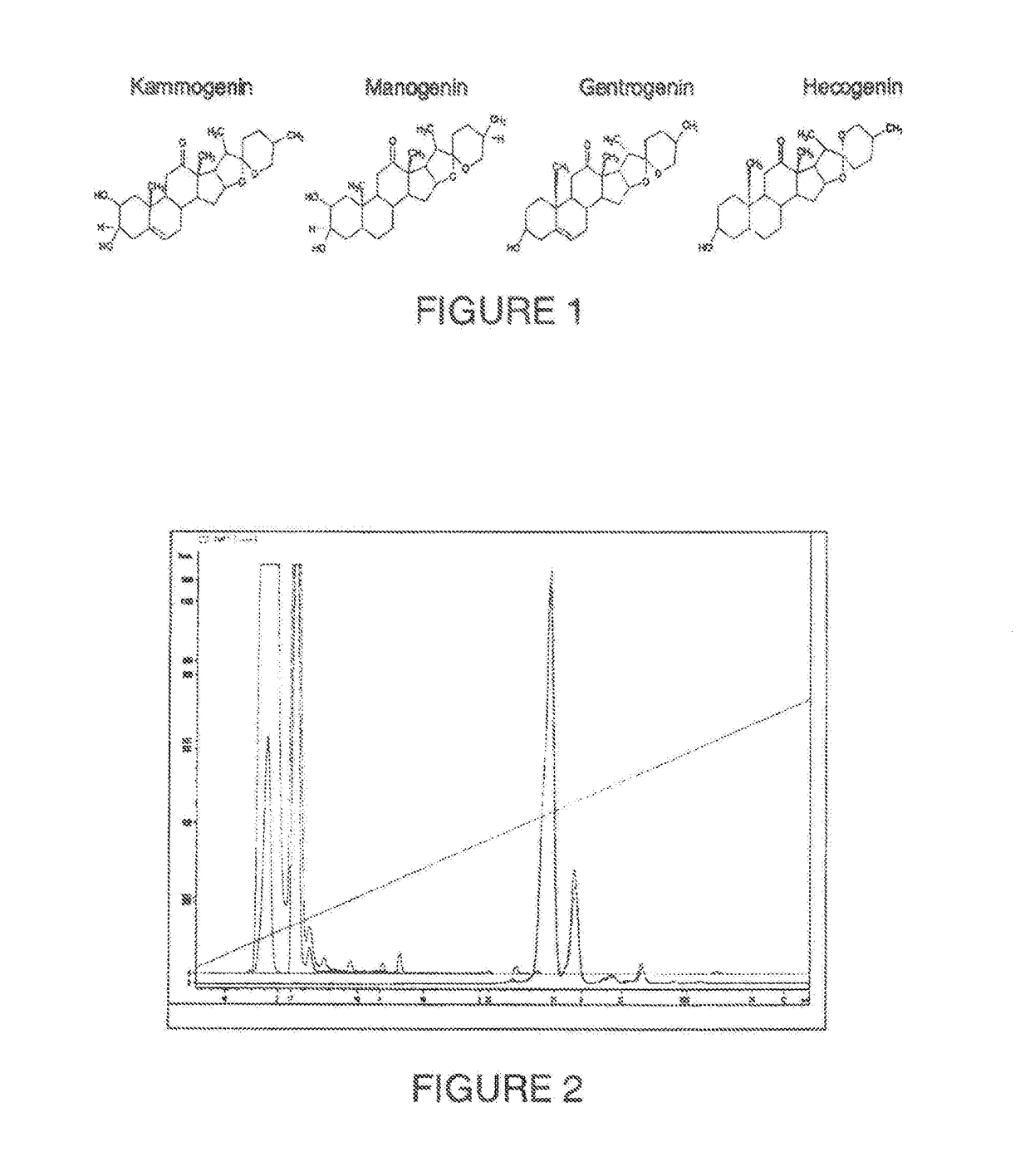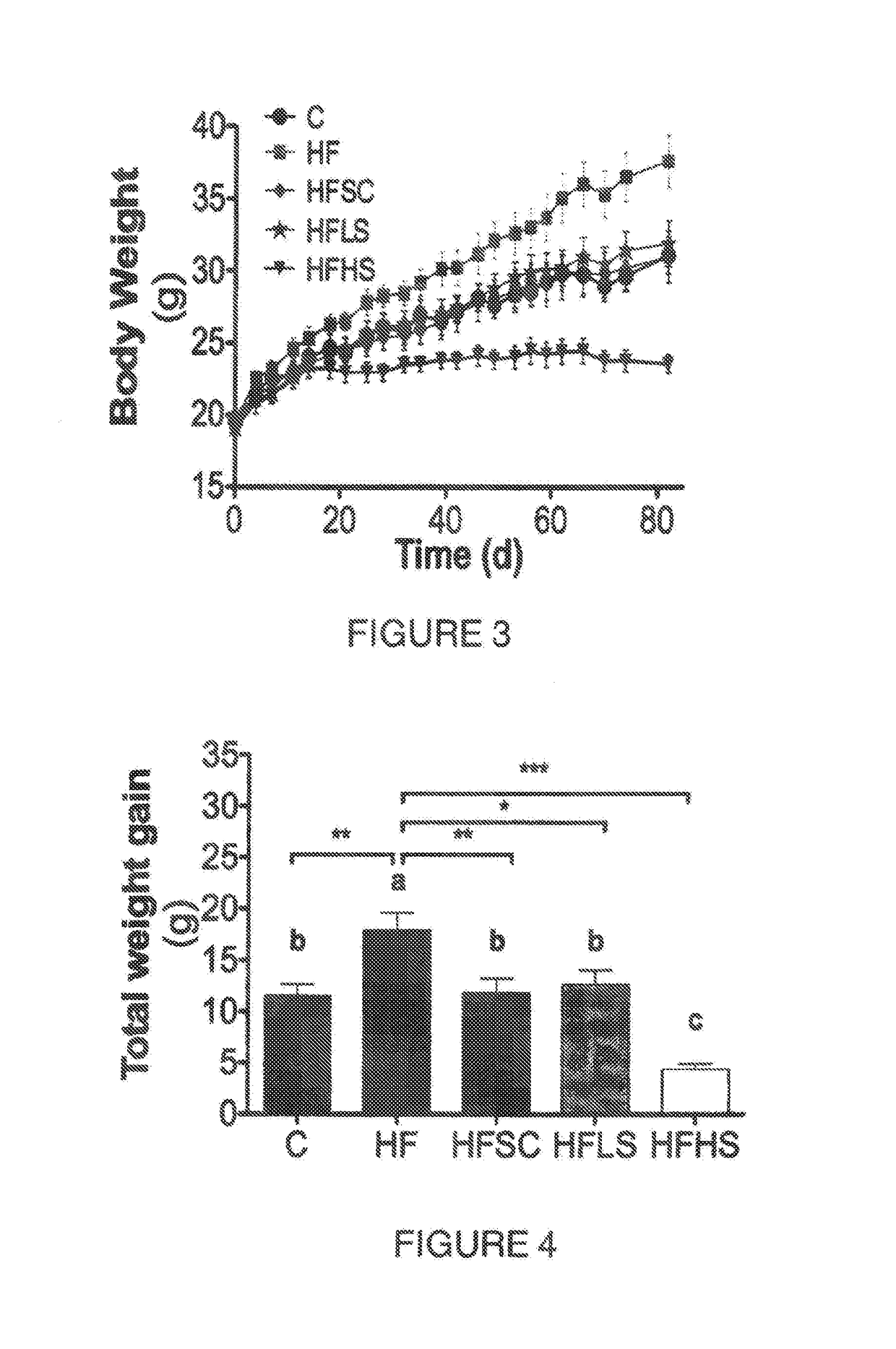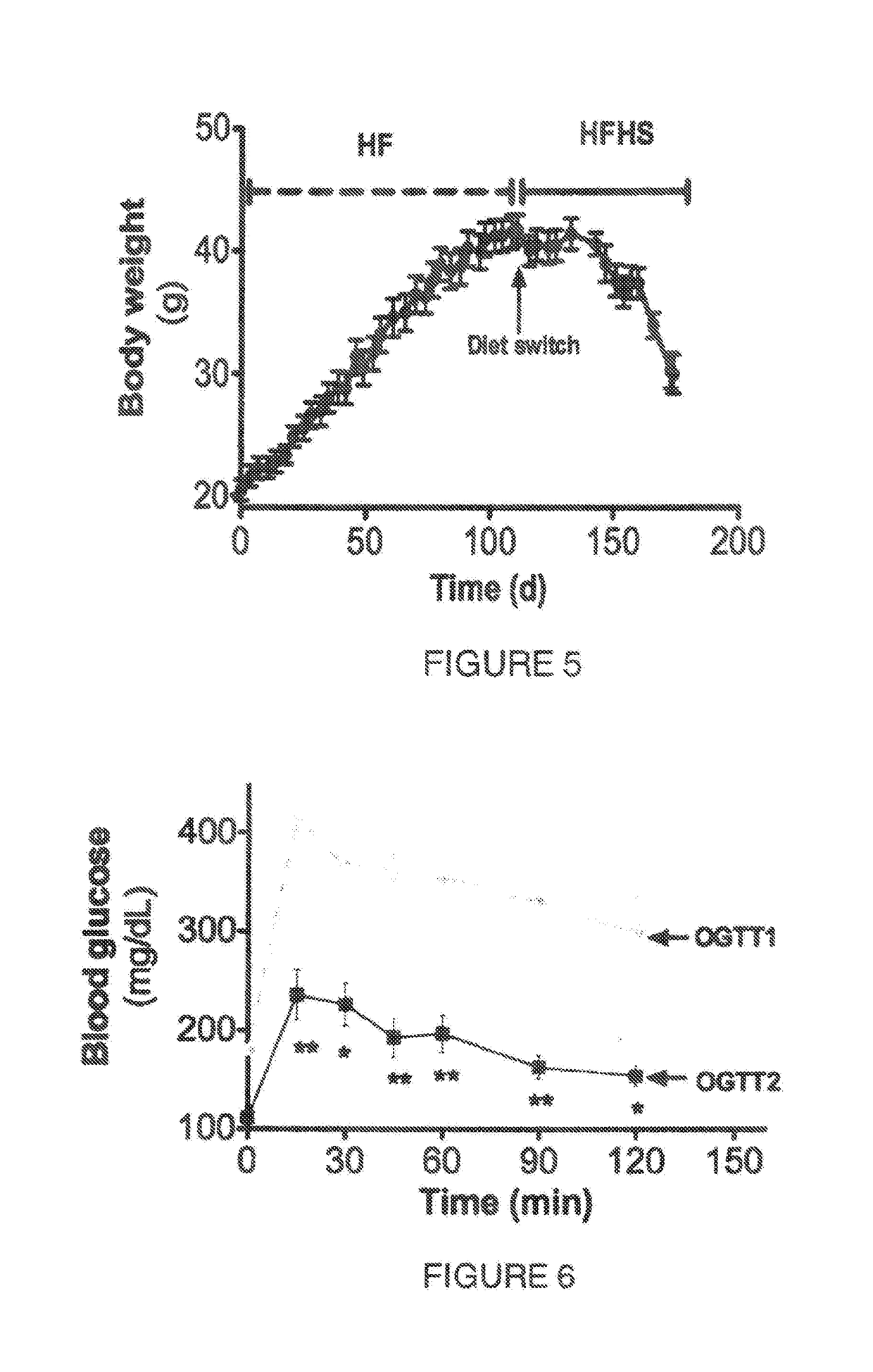Agavaceae extract comprising steroidal saponins to treat or prevent metabolic disorder related pathologies
- Summary
- Abstract
- Description
- Claims
- Application Information
AI Technical Summary
Benefits of technology
Problems solved by technology
Method used
Image
Examples
example 1
Steroidal Saponin Extract
[0126]A saponin extract was obtained from agave sap concentrate using a hydrophilic polar solvent and water to increase 5 to 20 times the concentration of total saponins. Saponins were separated by HPLC and detected using an Evaporative Light Scattering Detector and analyzed by mass spectrometry. Saponins were composed of glycosides of kammogenin, manogenin, gentrogenin and hecogenin (FIG. 1). The extract contained 65.9 mg / g of saponins, from which 74% were kammogenin derivatives, 11% were derived from manogenin, 8% from gentrogenin and 7% of hecogenin. Saponin composition changed depending on the natural source in some cases reducing the abundance of kammogenin glycosides to less than 50%. When the concentration of saponins in the raw material decreased 10 times, as in an agave sap concentrate with 0.23 mg / g instead of 2.45 mg / g, the concentration in the raw extract was 40 times lower. Therefore an enrichment of the raw material is recommended before extrac...
example 2
Steroidal Saponin Extract Enrichment
[0127]The raw saponin extract may be enriched after serial water partitioning prior solvent evaporation. Sequential water partitioning reduced the abundance of compounds that eluted from the reverse phase column before the saponins derived from kammogenin (FIG. 2). Partitioning chromatography or ion-exchange chromatography may be used to separate or isolate saponins from other polar contaminants, mainly sugars, phenolics and amino acid derivatives.
example 3
[0128]A Saponin Extract that Prevents Body Weight Gain Despite the High Fat Diet Consumption
[0129]Thirty-five C57BL6 mice (5 weeks old) were assigned to five treatments (n=7) and fed ad libitum for 12 weeks. The diets are presented in Table 1.
TABLE 1Experimental diet compositionCHFHFSCHFLSHFHSIngredient (g / Kg)Corn starch397.5247.7247.7247.7247.7Casein (≥85% protein)200245241.8245245Maltodextrin13271.371.371.371.3Sucrose10010076.9100100Soybean oil7073.573.573.573.5Cellulose5050505050Minerals3535353535Vitamins1010101010L-Cystine33333Choline2.52.52.52.52.5Lard—161.5161.5161.5161.5Saponin rich extract———2.828Agave sap concentrate——50——% Energy (Kcal) from:Protein1919191919Fat1645454545Carbohydrates6536363636Control (C) diet was based on AIN-93 diet for rodents(Reeves, Nielsen, & Fahey, 1993); high-fat (HF) diet was based also on AIN-93 with 45% of the Kcal from fat; HF diet with 5% of agave sap concentrate (HFSC); HF diet with low saponin extract dose, adding 2.8 g saponin extract (dry ...
PUM
 Login to View More
Login to View More Abstract
Description
Claims
Application Information
 Login to View More
Login to View More - R&D
- Intellectual Property
- Life Sciences
- Materials
- Tech Scout
- Unparalleled Data Quality
- Higher Quality Content
- 60% Fewer Hallucinations
Browse by: Latest US Patents, China's latest patents, Technical Efficacy Thesaurus, Application Domain, Technology Topic, Popular Technical Reports.
© 2025 PatSnap. All rights reserved.Legal|Privacy policy|Modern Slavery Act Transparency Statement|Sitemap|About US| Contact US: help@patsnap.com



